
Google Pixel 4 and Pixel 4 XL
$799 to start
The Good
Snappy and responsive • Transcription feature sells itself • Very good camera
The Bad
Starting storage and battery life are mediocre • Motion Sense is a dud • Not the best value
The Bottom Line
The new Pixel phones are quality Android devices, but they aren’t the best smartphones on the market.
😎 Cool Factor 4.0
Ease of Use 4.0
💪Performance 4.0
💵Bang for the Buck 3.5
When I got Google’s new Pixel 4 and Pixel 4 XL, I wasn’t expecting to be surprised. Both phones were leaked to oblivion in the months leading up to their launches, sometimes by Google itself. Instead, all I wanted was for the features everyone knew about to function properly.
I wanted the live speech transcription to work quickly and accurately. I wanted the new Motion Sense gestures to work consistently. And, of course, I wanted the camera to make everything look beautiful without me having to do much.
Generally speaking, I’m pleased with how the phone performed. The Pixel 4 is a snappy, responsive device that can make your life easier without wasting your time with dumb gimmicks. Unfortunately, at least one major new selling point didn’t sit right with me.
First, the basics
I spent most of my time with the Pixel 4 XL. Both phones are pretty much exactly the same except for their screen size and battery life. The Pixel 4 has a 5.7-inch OLED screen while the XL comes in at 6.3 inches. Their batteries measure at 2,800 mAh and 3,700 mAh for the Pixel 4 and Pixel 4 XL, respectively.
I should note that the battery life, while not disastrous, doesn’t really stand out as a big plus for either model. Last year’s base Pixel 3 had more capacity than the base Pixel 4, while the Pixel 4 XL comes in below the iPhone 11 Pro Max and Samsung Galaxy Note 10 Plus.
A new 90Hz display makes scrolling look incredibly smooth. The Qualcomm Snapdragon 855 processor, while not the best in its class, is powerful enough to make every action on Pixel 4 feel fast and responsive.
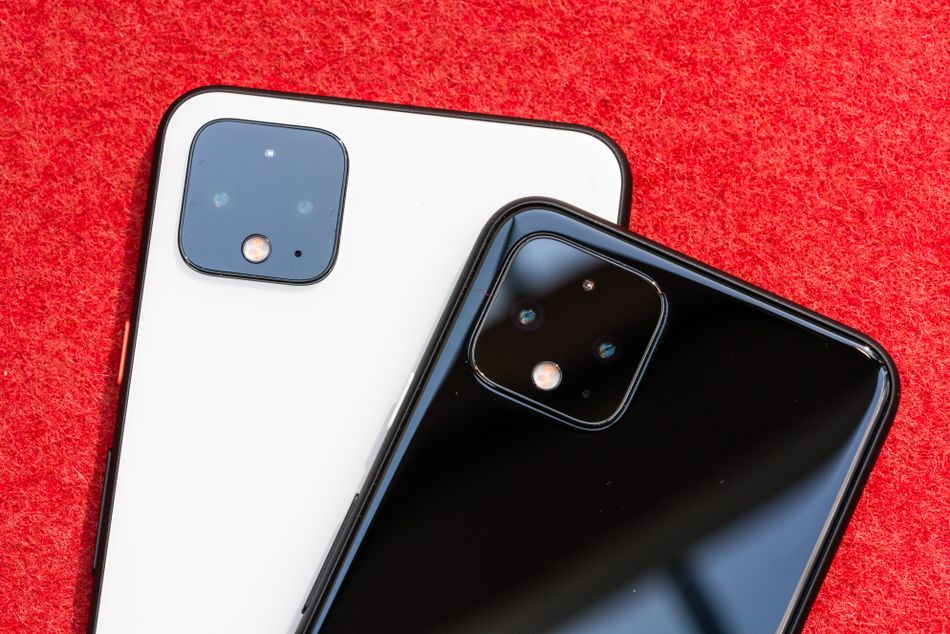
Bumps.
Image: zlata ivleva/mashable
These new Pixels also have a square camera bump on the backside to go with the glossy finish on the black and white models. Just as it wasn’t a problem with the iPhone 11, I can’t say the bumps affected my experience with the Pixel 4 at all. In general, these are sleek, handsome phones.
If you’re hell-bent on getting a Pixel 4 this fall, I wouldn’t hesitate to recommend getting the XL over the smaller variant. Unless you just prefer the form factor of a smaller phone (very understandable), the larger, gorgeous screen and improved battery life might be worth the extra $100.
Still, there are real concerns about value here. For starting prices of $799 for the Pixel 4 and $899 for the Pixel 4 XL, you get mediocre batteries (relative to major competitors) and only 64GB of internal storage. Not exactly a bargain on either front, but that’s the direction flagship phones are going in now, sadly.
Speech and text, in perfect harmony
One of the coolest things both phones boast is on-device AI that enables a couple of genuinely great accessibility features centered around speech-to-text transcription. First up, Google finally introduced a native Recorder app with the Pixel 4. It works like a standard voice recorder, which is cool, but isn’t what really matters here.
The speed and accuracy of the transcriptions are nothing short of stunning.
Within Recorder is a live audio transcription tool that provides readouts of speech in realtime that are 100 percent searchable. Whether you’re recording a lecture for future reference, archiving an interview for journalistic purposes, or just surreptitiously recording every conversation you have a la Dale Gribble from King of the Hill, it’s super easy to go back and search for any moment you need. (Please don’t secretly record conversations, though.)
The speed and accuracy of the transcriptions are nothing short of stunning. I didn’t notice a difference in quality from audio recorded in the cacophony of Google’s launch event and the relative quiet of the Mashable office. It did a great job of quickly processing and transcribing speech in just about every normal, everyday scenario I tried.

Pixel 4’s new transcription tech is great.
Image: zlata ivleva/mashable
It would be one thing if it was merely accurate, but it’s astonishingly good at keeping pace with the quickness of human speech. A direct comparison to transcription technology on an iPhone XS left Apple’s excellent phone in the dust. Google has plenty to be proud of here.
Similarly, Live Caption is a feature that will automatically generate and display closed captions for media you watch across different apps. I had … a little bit less success with this, but I wouldn’t call it discouraging.
In videos where people speak clearly and not too quickly, it’s mostly fine. In something like On Cinema at the Cinema, where hosts Tim Heidecker and Gregg Turkington are more conversational and occasionally under-enunciate words, Live Caption can get lost quickly.

Faster-paced conversations were a little too much for Live Caption to handle.
Image: alex perry/mashable
Anyone who’s watched On Cinema knows that’s a difficult assignment, but that’s why I chose it. It shows how far this technology has come and how far it has to go. It’s pretty cool that it can quickly generate captions, but it can definitely be better.
Minor bumps aside, these were the Pixel 4 features that impressed me most. The Recorder app’s transcription sets a new standard. It’s easy to see the benefits for journalists and students, but these developments could be a boon to those who are hard of hearing.
One last thought on the features: both only work for English right now.
Empty gestures
And now, for something way less cool.
Years ago, during a press conference most of the world has probably forgotten, Microsoft executive Kudo Tsunoda tried to use motion controls to show the world what the bottom of a video game character’s shoe looked like. It backfired horribly.
I bring this up because one of the other big selling points of the Pixel 4 is Motion Sense, a radar-fueled motion tracking system that theoretically allows users to interact with their phones without even touching it. If you’re worried about having to unlearn the last decade of touchscreen gestures in favor of Minority Report-style hand swipes, don’t.
Motion Sense might be transformative someday, but that day isn’t now. Google is advertising it as a way to navigate your phone’s interface by swiping your hand above the radar sensor at the top of the Pixel 4. Aside from using it to move around the home screen, you can use it to skip songs, decline phone calls, and dismiss alarms.
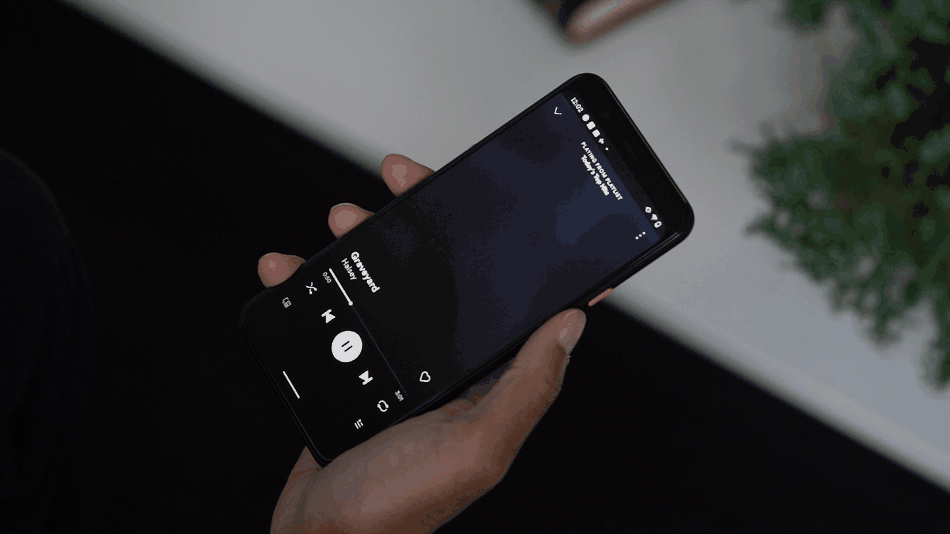
It rarely worked like this for me.
Image: zlata ivleva/mashable
Well, when it works, anyway. I had a hell of a time getting Motion Sense to respond to my gestures in my time with the Pixel 4. Skipping songs on Spotify should be straightforward enough since it’s just a left swipe or a right swipe, but I found it unresponsive to the point of uselessness.
The best application for Motion Sense I found was the interactive Pokemon wallpaper that came packaged with the Pixel 4. You can select between a handful of Nintendo’s lovable critters and they’ll respond if you wave or move your hand close to simulate a pet. It works fine most of the time, but less than 24 hours after getting the phone, I had a moment not unlike that Microsoft video I linked earlier.
Ever wonder what the back of Pikachu’s head looks like? For no discernible reason, it went full Exorcist on me when I got my hand close to the screen. It was honestly the best time I had using Motion Sense, but unfortunately, it fixed itself after a quick reboot.
Motion Sense is also tied to face unlocking, which is another big change to the Pixel 4. The old fingerprint sensor is gone and has been replaced by a pretty good facsimile of Apple’s Face ID system. It unlocks the phone quickly enough, though I would still prefer a fingerprint sensor or a good, old-fashioned home button.
One thing to note is that Pixel’s face unlock works even when your eyes are closed, which means somebody could theoretically get into your phone while you sleep.

Setting up face unlocking is simple.
Image: zlata ivleva/mashable
Camera time
Both the Pixel 4 and Pixel 4 XL have a 12.2MP main shooter and 16MP telephoto lens on the back, and an 8MP selfie camera on the front.
Apple went hard on wide-angle photography with the iPhone 11, but Google took things in a different direction for the Pixel 4. Using a combination of the 16MP rear camera and Super Res software from the Pixel 3, it can go up to 8x zoom without losing as much quality as one might expect from a phone camera.
I was fairly pleased with the results when I tried this. One of the train platforms in my neighborhood has a decent view of the lower Manhattan skyline, but the zoom on my iPhone 8 isn’t kind to it. Here’s what it looks like on the Pixel 4 with no zoom.
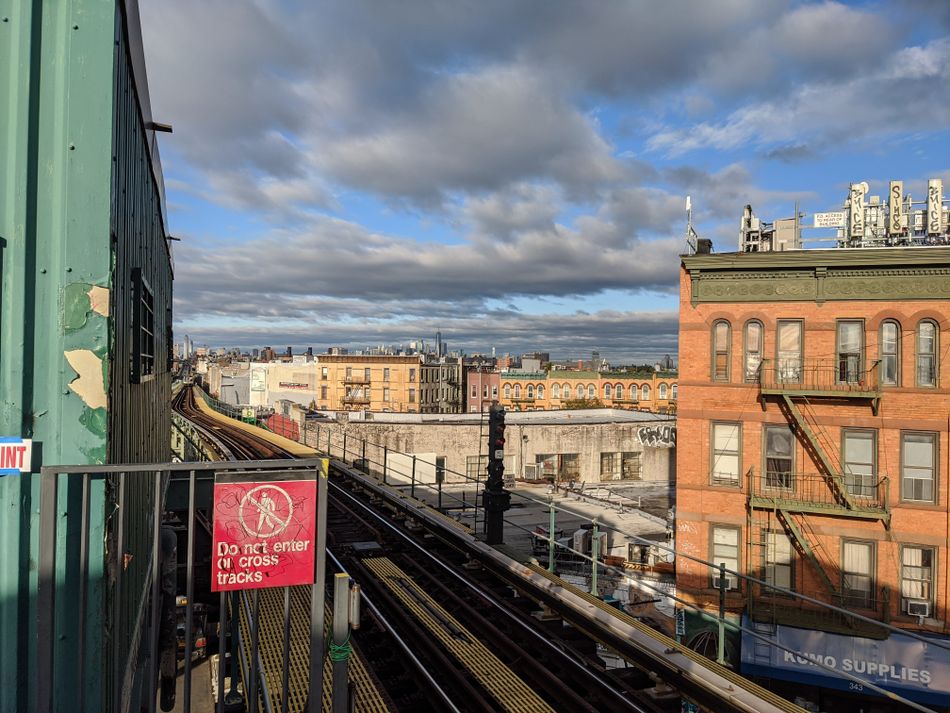
The view of Manhattan from my neighborhood with no zoom.
Image: alex perry/mashable
And here’s what it looks like all the way zoomed in. It’s not going to fool anyone, but not bad, right? There’s a clear drop-off in sharpness, as you’d expect, but you can still clearly make out small windows, the flock of birds in the lower right corner, and other minute details a lesser zoom lens wouldn’t be able to touch at that distance.

And at 8x zoom.
Image: alex perry/mashable
The Pixel 4 also boasts new exposure sliders within the camera viewfinder, as well as something they’re calling “Live HDR+.” Just tap the viewfinder and two sliders will come up allowing you to intuitively adjust regular brightness and shadow brightness before taking the photo. It’s simple enough and does its job.
Live HDR+ claims to give a more accurate view of what an HDR photo will look like within the viewfinder before the photo is taken. This seems to work to the extent that what you see in the viewfinder is generally close to what you’ll get, but the actual quality of HDR photos on Pixel 4 isn’t always perfect.
Take these two photos, for example. They were both taken within seconds of each other with no adjustment to camera settings in between. In one, you can clearly make out the details of both the wall and the cloudy sky, which is what we want. In the other, the sky is washed out and only the wall is accurately exposed.
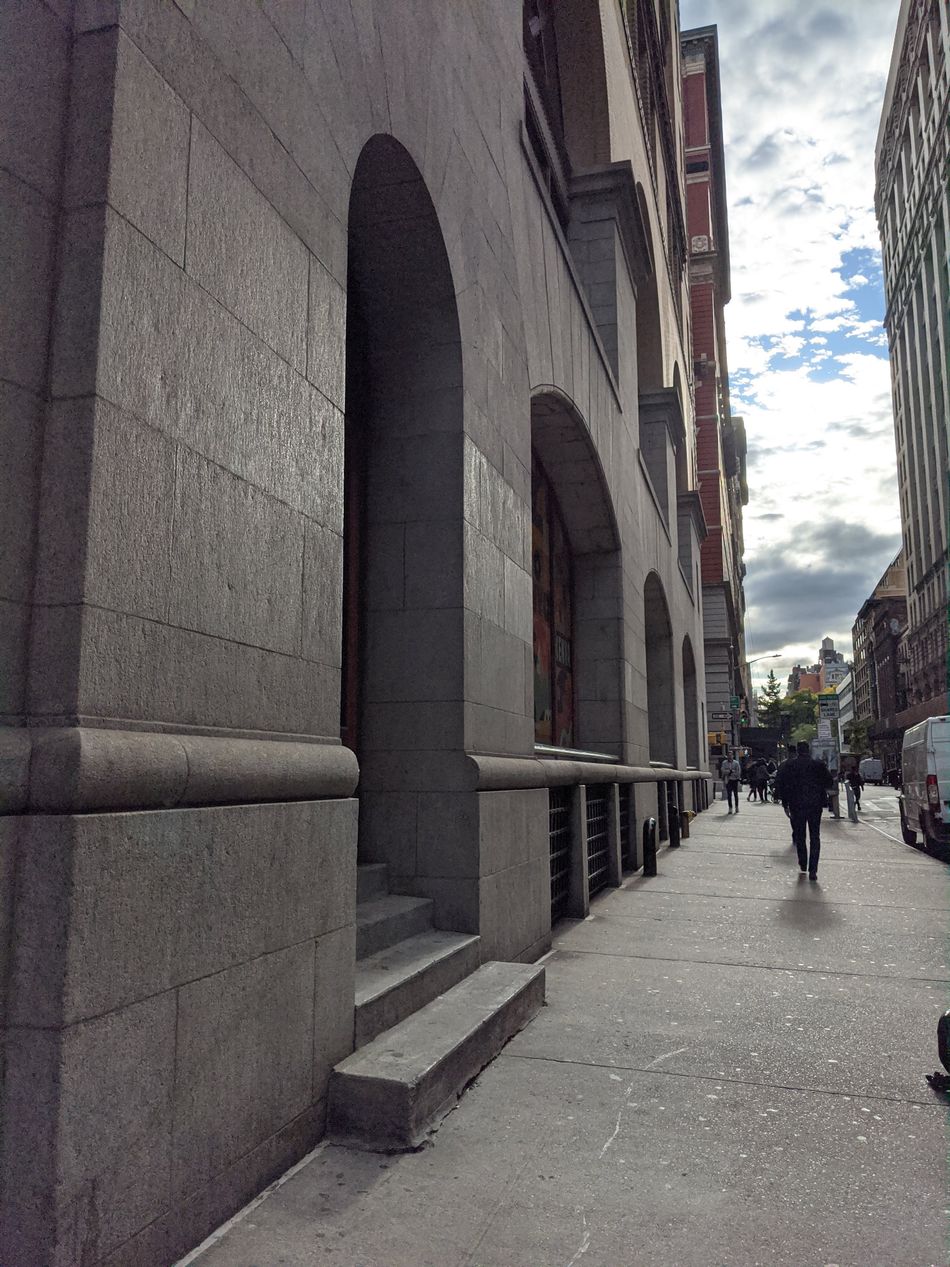
This looks good.
Image: zlata ivleva/mashable
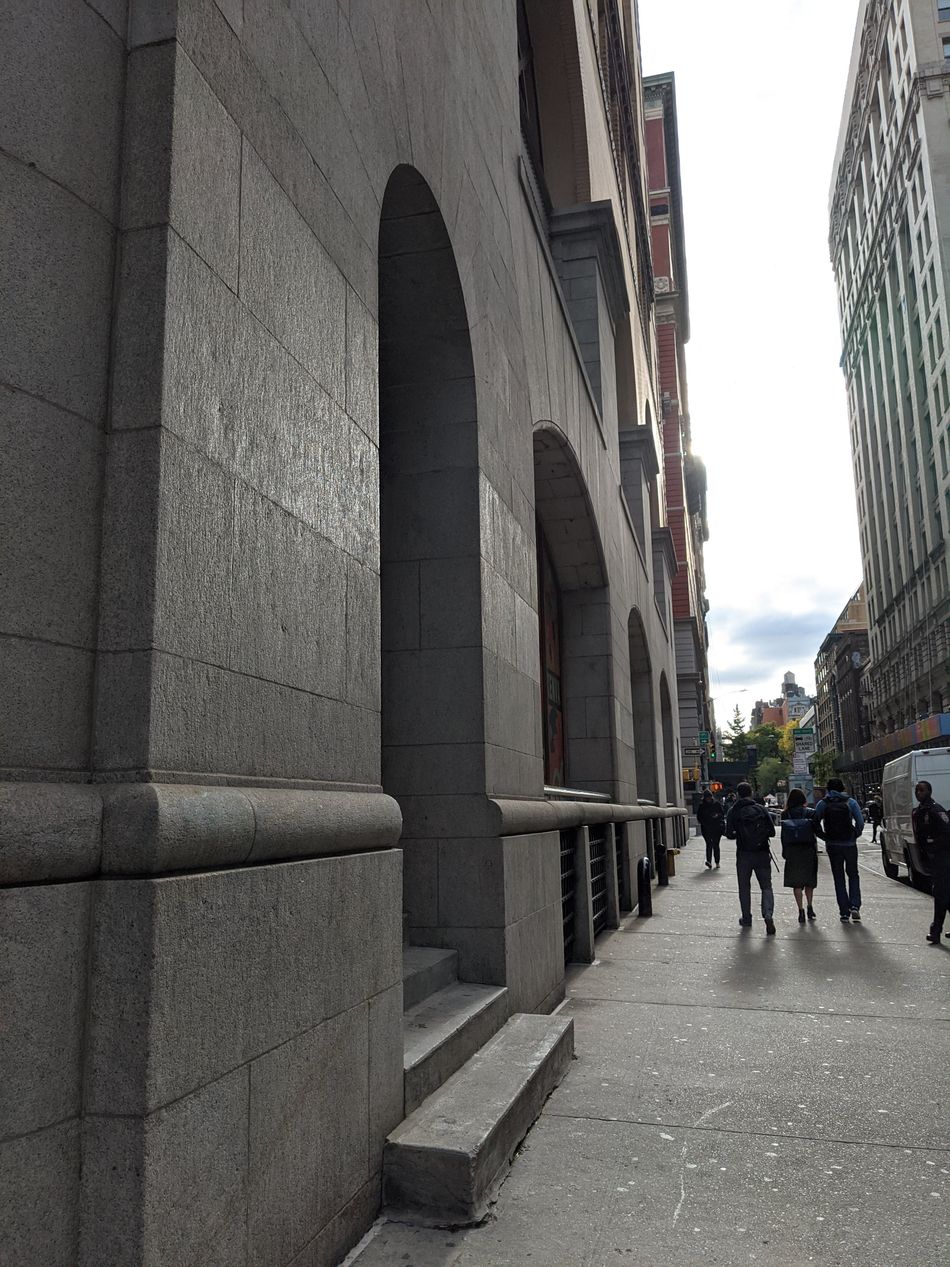
This does not.
That inconsistency isn’t a deal-breaker, but it does mean you might want to take several photos to make sure one of them comes out right.
Night Sight made a big splash when Google released it as a software update for Pixel phones last year, and sure enough, it’s back with some improvements on Pixel 4. Google boasted about the Pixel 4’s ability to take shots of the starry night sky using Night Sight. Sadly, I didn’t get a chance to try it in New York City, thanks to the combination of light pollution and clouds.
I did, however, find some of the darkest corners of my neighborhood and used Night Sight to brighten them up. I don’t think it’s quite as good as the low-light mode in the iPhone 11, but it still feels pretty magical when the Pixel 4 turns something you could barely see with your eyes into something that almost looks like a daytime shot.
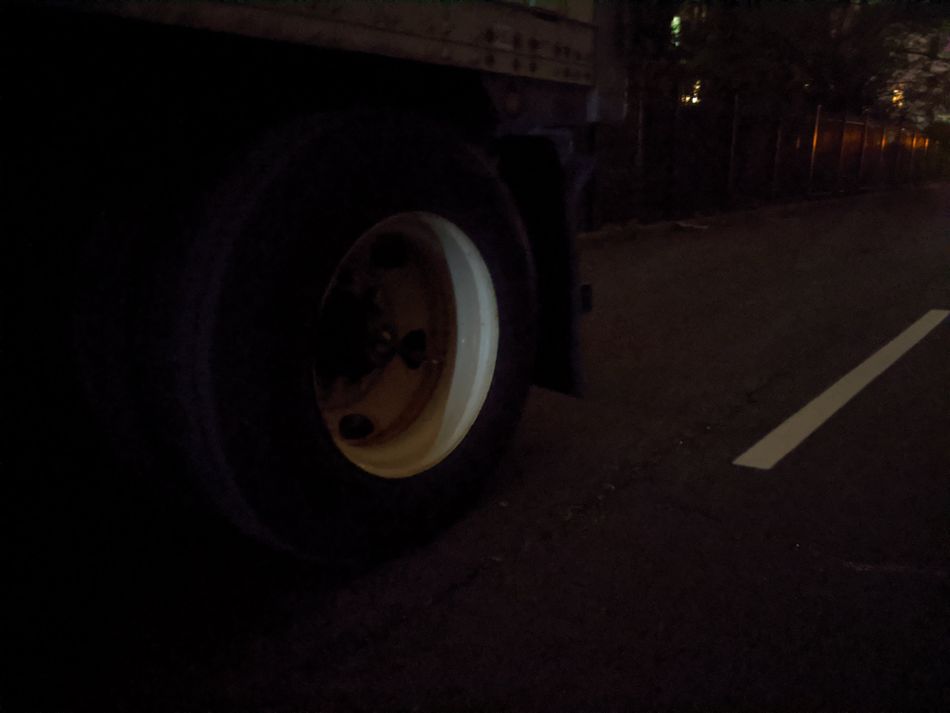
This truck wheel in a back alley with next to no lighting was barely visible to my eyes.
Image: alex perry/mashable

But Night Sight made it look like I shot it in broad daylight.
Image: alex perry/mashable
This was my experience with just about every Night Sight shot I took. Something dark and tough to see almost instantly looked great, although sometimes in a fake-looking way. While they looked marginally less natural than photos taken with Night mode on the iPhone 11, the photos still looked great.
Overall, I would say the Pixel 4’s camera setup is very good, but I wouldn’t put it on the level of the iPhone 11 Pro. It’s closer to the iPhone 11. In other words, I can’t see too many people getting the Pixel 4 and being unhappy with the camera.
Final thoughts

Night Sight is wonderful. The battery and storage? Not so much.
Image: ZLATA IVLEVA/MASHABLE
I don’t know that someone with a Pixel 3 needs to rush to get a Pixel 4, but those who do will probably be satisfied. Real-time transcription in the Recorder app is a home run and Live Caption has uses, even if it’s not always perfect.
But the Motion Sense features are ineffective to the point that I’m not sure why Google chose to include them this year. Swiping your hand above a phone two or three times to get Spotify to change a song isn’t fun.
The battery life and storage space could be better for the price, but a slick user experience, nice camera, and useful transcription make this a good choice if you’re looking for a quality Android phone.
Digital marketing








